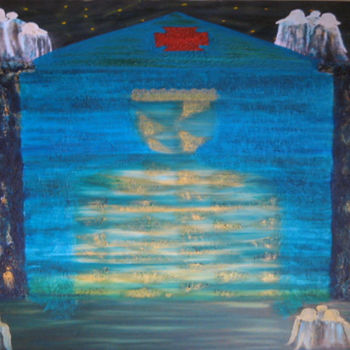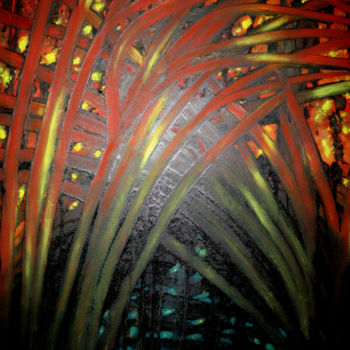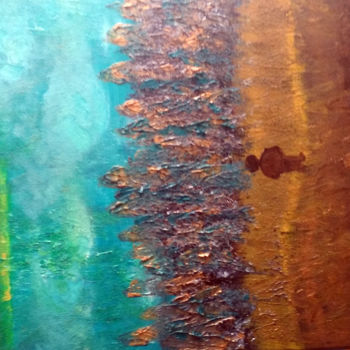-
Original Artwork
Painting,
Oil
on Canvas
- Dimensions Height 39.4in, Width 30.7in
- Categories Paintings under $5,000 Outsider Art
Alberto Caeiro, heteronym of Fernando Pessoa
One day, a gipsy student, black and beautiful eyes, 16 years old, leaned the head on the classroom desk.
I approached and told him: "Miguel, that position is not suitable for a class. Didn't you sleep at night? "
The child lifted his face and confessed to me with tears in his voice: "I slept, but I’m still sleepy! My mom made me get up to come to school. It was still night. I just wanted to sleep. You think this is normal? The classes could start later. This is not natural. "
I tried to explain the reason of the phenomenon of socialization, linked to compliance with rules, but the last word he said – "natural" made me think that the young man, some way, was right. In reality, the social time changed our biorhythm.
Of course there are many reasons and organizational theories that explain this phenomenon.
But, somehow, the kid was right, too.
We did a society full of points of light, flanked with almost invisible curtains, which made silhouettes on a stage that, sometimes, is not ours.
I was born in Lisbon.My father was portuguese, but part of my mother’s familly is italian.
My first passion in life, in what concerns art production, was Literature.I studied Literature in a portuguese university, I did a master’s degree in Compared Literature and I taught in a secondary school and in an university.I discovered oil painting when I was studying History of Art (as sculpture, architecture). At that time - my adolescence - I realize I liked every form of art expression.I understood that my life would be richer, if I surrounded myself of beauty (later, I would know that all human beings are sensitive to aesthetics), because it is related with the pleasure of the senses and of the soul). I had, too, the clear perception that who makes art has something to tell. I could learn so much! I had the heritage of Humanity.I was fascinated by Michelangelo, Da Vinci, the divine proportion, introduced in the painting, by the Baroque painters, the game between light and shadow, the movement, the sensuality, the bright colors, by co Delacroix, who gave us “Liberty leading the people”; by the clouds of Turner, by the “impression” of Monet, by the existentialist expressionism of Munch and the symbolism of Klimt; by the abstractionism of Kandinsky,by the irreverence of Dalí, the audacity of Picasso, by Pollock, and by so many others, that made world change, because art is the expression of the essence of the human being, of his imaginary, of his values, of his complaint, of his fight, of his incessant search of himself to achieve his deepest desires. Painting became a travel; I could/can forget the space and the time I was/am living and penetrate a world of pure evasion.Suddenly, I felt that situations I was experiencing made me enter in the universe of reflection and I began to paint motivated by my feelings and my thoughts about circumstances, relationship, society, concept of personality, reality, good and bad as relative, perishable constructions.. I created a dreamlike universe, based in the “short stories” that are the thought behind the canvas, translated in color, suggesting depth, subjects that are common to all mortals and that are closely related with the human condition and to what makes us alike. In my paintings, the absence of defined forms or mimesis are the representation of thbeing and the possibility of seeing reality of several angles,making invitations to different interpretation, because I know who sees recreates the complexity of human a painting that is not mine anymore.
-
Nationality:
PORTUGAL

- Date of birth : 1960
- Artistic domains:
- Groups: Contemporary Portuguese Artists








